
We kindly inform you that, as long as the subject affiliation of our 300.000+ articles is in progress, you might get unsufficient or no results on your third level or second level search. In this case, please broaden your search criteria.


The article analyses problems of constructing of remembrance and memory in the literary text and the specifics of the fictive narrator and autobiographical writing in the prose of Herta Mьller and Catalin Dorian Florescu. Special attention is paid to the different aesthetic strategies in reconstruction of the past and to the theoretical discussion about similarities and differences of the terms “writing in emigration” and “postcolonial narrative”. Texts are interpreted, which reflect the forms of suffering and resistance during Ceausescus’s dictatorship and the painful concussions after 1989 in post socialist Europe.
More...
The paper gives an insight into the postbiological evolution and the posthuman world in the novel “The Abolition of Species” („Die Abschaffung der Arten“, 2008) by Dietmar Dath. The term postbiological evolution refers to a human-driven evolution that in the novel leads to a world inhabited by human descendants in the form of machines and animals. It analyzes the development of the opposed civilizations of robots (the so-called Keramikaner) and human-animal hybrids (the so-called Gente). The posthuman world they inhabit is a world in which Man is no longer at the center of world history and only lives on thanks to technogenic and genetic modifications. The aim of the paper is to explore the depiction of the altered relationship of the modern humans to their biological and technological environment by analyzing the influence of the theories of postbiological life and posthumanism on the novel.
More...
The review of: Злочевская Алла Владимировна: Три лика мистической метапрозы ХХ века: Герман Гессе – Владимир Набоков – Михаил Булгаков. Super Издательство, Санкт-Петербург, 2016, 552 c., ISBN 978-5-00071-999-2.
More...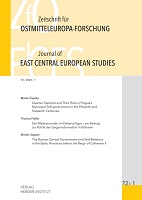
Review of: Ulrike Mascher: Stadttexte und Selbstbilder der Prager Moderne(n). Literarische Identitätsdiskurse im urbanen Raum. transcript. Bielefeld 2021. 316 S., 7 Ill. ISBN 978-3- 8394-5586-9. (€ 47,–.)
More...
Architecture, in the real world as well as in the fictional world of children’s literature, seems always to be connected with ideology, i.e. a system of beliefs held by a social group or society as a whole. This is shown with respect to German children’s literature dealing with famous buildings of the 20th century, namely the semi-detached house by Le Corbusier and Pierre Jeanneret in the Stuttgart Weißenhofsiedlung that is portrayed in Hannelore erlebt die Großstadt by Clara Hohrath (1935 [1931]), the Hochhaus an der Weberwiese by Hermann Henselmann in the Berlin Stalinallee, figuring in Die Flaschenpost im Hochhaus by Annegret Hofmann and Helga Leue (1988), and the 660–680 Lake Shore Drive Apartments by Ludwig Mies van der Rohe in Chicago, described in Alles Bauhaus? Eine fantastische Zeitreise mit Mia und Lucas by Ingolf Kern, Werner Möller and Kitty Kahane (2019).
More...
The inspiration for this article came from Jüri Talvet’s observation that Johann Wolfgang von Goethe’s „Faust” and Friedrich Reinhold Kreutzwald’s „Kalevipoeg” show some remarkable similarities in their philosophical structure and plot. This article therefore aims to compare these two masterpieces by using Harold Bloom’s and Paul de Man’s understanding of tropes. While allusion and intertextuality studies typically focus on a limited number of similarities between two texts, Bloom’s anxiety of influence theory helps to apprehend both texts as a whole. This objective is achievable with two constraints. Firstly, making such a comparison requires us to widen our understanding of tropes. In this analysis, tropes do not signify limited transfers of meaning (from one word to another), but the full transformation of a text’s meaning. The background to this article lies in the hypothesis that large chunks of ¬„Kalevipoeg” can be read as tropes that are derived from the verses of „Faust”. ¬Secondly, this kind of analysis cannot focus on the style, genre or semantic nuances of both works, but only on the general picture: the stories and their protagonists. The anxiety of influence theory shows that the change of meaning from one work to another can be described by means of two kinds of tropes: limiting and repeating ones. In this article, the limiting tropes of irony, metonymy and metaphor can be used to depict the change of meaning from „Faust” to „Kalevipoeg”. The story of an intellectual who makes a pact with the devil, seeks absolute love and wishes to accomplish godly deeds becomes a story of a mythically strong hero who has no choice, never finds true love and achieves predestined greatness. According to Bloom, this is only half of the comparison. In a follow-up article, I will show how the repeating tropes of synecdoche, hyperbole and metalepsis can be used to demonstrate that the fate of these different protagonists is in fact somewhat similar.
More...
This article is a sequel to “Struggle over the ages I: Reading Kreutzwald’s “Kalevipoeg” as opposite in meaning to Goethe’s “Faust”” (Parksepp 2023). The pair of articles aims to exemplify how Harold Bloom’s and Paul de Man’s complementary views on rhetoric and tropes help to reveal the differences and similarities between Goethe’s and Kreutz¬wald’s masterpieces. The objective of the first article was to describe how, according to the anxiety of influence theory, the limiting tropes of irony, metonymy and metaphor can be used to depict the change in meaning from “Faust” to “Kalevipoeg”, whereas this article shows how the Bloomian recurring tropes of synecdoche, hyperbole and metalepsis define ways in which the Estonian national epic recreates the meaning of Goethe’s grand tragedy. Underneath all the stylistic and genre conventions lies a story of two opposite protagonists with a similar fate. Both Faust and Kalevipoeg commit crimes, although the full tragedy of Gretchen is reduced to a synecdoche: an episode where Kalevipoeg meets an island maiden whose death he causes by accident. Both protagonists get help from the devil or hell, but Mephistopheles’ and Faust’s imaginative paper money finds a hyperbolical counterpart in the later work: Kalevipoeg defeats the devil and brings real treasures out from the underworld. However, a Bloomian metaleptic reversal of history occurs in the final episodes of both works. The salvation of Faust raises questions; one could argue that it is an example of Aristotle’s deus ex machina method, where the fate of Faust’s soul does not follow from the plot. By comparison, the final scene of “Kalevipoeg” seems more logical. Although the deceased national hero is briefly cheered in heaven, he is still sent to hell as a gatekeeper. Even on a white horse his disabled body is a gruesome reminder of his blood guilt. His wrongdoings and evil deeds are not forgotten as in “Faust”, where the protagonist is saved from hell due to his eternal drive. Even the prophetic final lines of “Kalevipoeg” include a warning taboo: with the return of the mighty Estonian hero, evil will also be set free. Therefore, on a rhetorical level, it can be argued that the end of “Kalevipoeg” is more refined and fulfils the Bloomian trope-reversing trope of metalepsis. Rhetorically, the ending of “Kalevipoeg” can be read as an original to the closing scene of “Faust”, where the interrogation of good and evil (the hero and the devil bound together at hell’s gate) is replaced with an idea of good always prevailing over evil (an all-powerful heaven with Mater Gloriosa just waiting for Faust). Of course, this is only one point of view, but it shows how Bloomian ideas can be used methodically to analyse great works of literature. It also raises the objectively unanswerable question of why great works of literature survive over the ages.
More...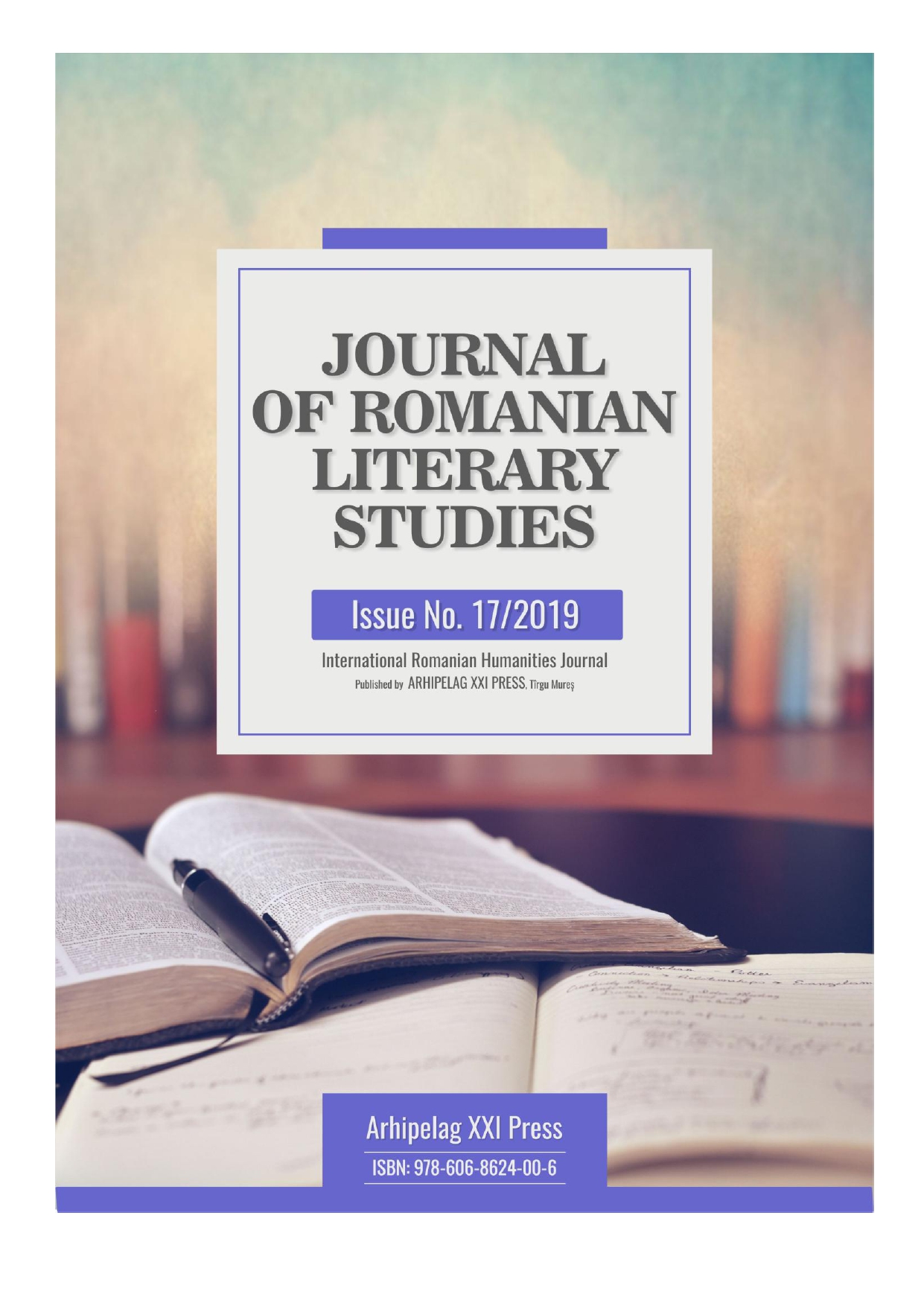
The present study focuses on mental or psychological distortions that appear in two texts, Woyzeck by Georg Büchner and The Visit of the Old Lady by Friedrich Dürrenmatt. We argue that these depict the alienation of characters, alienation which can be traced as a manifestation of the grotesque, juxtaposed with the absurd. If Büchner‘s character incorporates bestiary elements, Dürrenmatt chooses the grotesque to represent the paradox in his works, both of them describing in fact a defragmentation of the sense.
More...
The aesthetic function and purpose of the so-called postmodernist “artistic games” is to search for forms of relationship with already existing written texts. Deconstruction is an approach to understanding the relationship between text and meaning that opposes rationalism. A kind of “stimulating unrecognizability” and “controlled chaos” are characteristic of it. This concept offers us such principles that destroy traditions, stereotypes, at the same time, exposing and revealing their base, the pre-text, which is restored and proposed in the phenotext based on the imagination, commenting, evaluation and interpretation of the pre-text, taking into account the socio-cultural environment. Deconstructivism, as a postmodernist trend, is inspired by the idea of abandoning aesthetics and fundamental principles. It allows the author to recreate a completely different version of the finished “product” of the past, rooted in traditions, and to offer the restored-updated text to the potential audience, the reader. The world around us is a text that needs not the order, but a new interpretation, reviewing and rewriting - this is the philosophical ideology of deconstructivism. Deconstruction is the privilege of a free, daring, rebellious person, who is ready to throw away, shatter oppressive stereotypes and frames, fragment “written texts” and give each detail a new meaning, a new life. Givi Margvelashvili, a German-speaking Georgian writer, a worthy representative of European postmodernism, whose life and creativity are completely built on contradictions and cataclysms, appears as such a writer-interpreter. In his work, as well as in postmodernism in general, the leading role belongs to the principle of dialogue. In postmodernist discourse, the recipient is the most important. The author has a constant, active dialogue with the reader. The action is not always dynamic, but chaotic, unplanned, based on the principle of framing. This time, in his ontoworld world, the animals-symbols are seeking for help, who are tormenting “due to” those faults, that “symbolized” people make because of their carelessness and irresponsibility. Margvelashvili turns the significance of the symbol upside down and considers it the most terrible form of animal torture. The author does not/cannot change anything in the classical symbolic world of animals/text, however, he rejects the basic, fundamental principles that underlie symbolism as a formalistic direction and tries to free it, separate the text/symbol from the traditional form and save it from “attachment”. The target of help for the “active member of the symbol-animals’ society” this time is “the eagle depicted on the head of the swastika”. The writer, by the principle of open space, again calls on the imagination of the reader and takes him to the vanguard scene through specific instructions. The reader, the same character, the same “hero of the book” (the author) imagines wearing a heavy leather glove on his right hand, raises his hand up (Nazi salute gesture - "Heil Hitler!" “Long live Hitler”) and turns his eyes to the eagle depicted on the swastika. Here the writer-interpreter already gets involved and offers us an absolutely changed, deconstructed picture. This is exactly a kind of rebellion against the “suffering” and “punishment” that, as the writer points out, the “animals – symbols” experience in the “captivity” of multiple meanings, polysemantism, and whose goal, ultimately, is the conscious creation of conflictual opposition that will awaken the surrounding space and transform the social background as it is Margvelashvili's decision on finding ways to form relationships with already existing written texts.
More...
Can Leo Perutz’s novels, either in terms of motifs or structure, be regarded as Prague German literature, even though they were written first in Vienna and later in Tel Aviv? His most successful novels Der Meister des Jüngsten Tages (1923) and St. Petri Schnee (1933) arguably include, similar to Gustav Meyrink’s early works, occult motifs, and apply, as Franz Kafka does in Das Schloss, the structure of an inverted initiation novel. Nachts unter der steinernen Brücke (1953) takes place at the time of Emperor Rudolf II, the favourite Habsburg of the German authors of Prague (see Tycho Brahes Weg zu Gott by Max Brod or Der Engel des westlichen Fensters by Gustav Meyrink). In contrast to the adventure novels of the inter-war period, which may perhaps seem trivial, Perutz’s last book is characterized by its refined composition and a return to cabbalistic mysticism.
More...
The presented text consists of two parts. The first is a review of Janina Gesche’s book devoted to the German-speaking winners of the Nobel Prize in Literature in the first half of the twentieth century. Gesche not only meticulously reconstructed the activities of the Swedish Academy, but also showed the cultural German-Swedish relations in this period against a broad background. The second part shows the activities of Carl David af Wirsén (1842–1912), who as secretary of the Academy had a huge impact on who will be honored with the award. Wirsén’s attempt to create his own rules for granting the Nobel Prize ended in failure, as shown by the theory of Pierre Bourdieu.
More...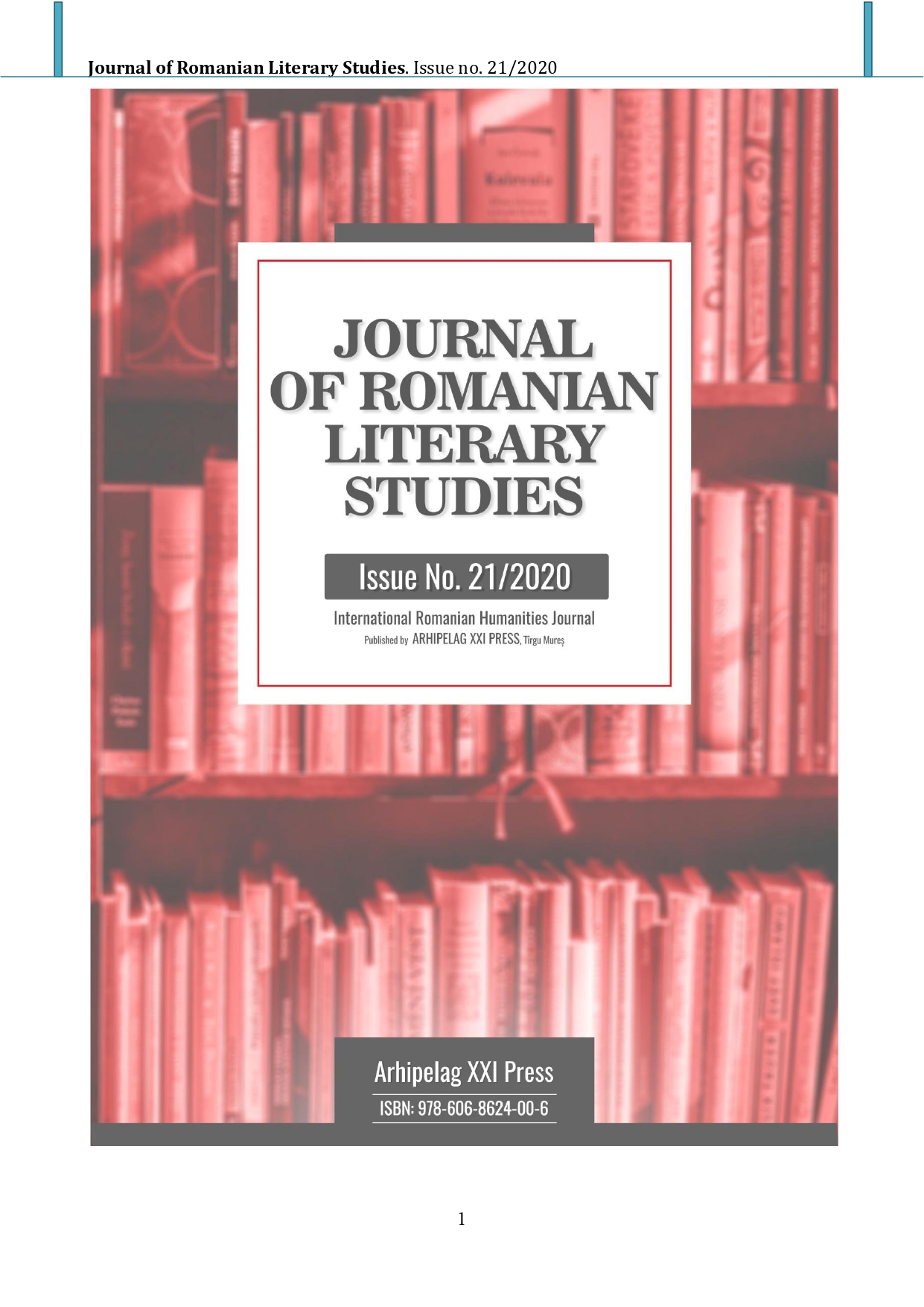
The well-known story of Hänsel and Gretel, has its roots in dark times and presents themes such as child abandonment, attempted cannibalism, subjugation and murder. On a closer reading, the story of Hänsel and Gretel, children's literature in appearance, depicts a ritual of initiation, a transforming journey of the two brothers from abandoned children to survivors, from victims to murderers, a real maturation process in which the protagonists face dangers to life and death, returning victorious to the point of departure.
More...
The title of the article encompasses three powerful female voices in world literature Unica Zürn, Sylvia Plath, Joanne Greenberg. Having as a start point the sketches and anagrams of the German writer and artist Unica Zürn, the collection of stories, whether we talk of novels, short stories, powerful personal journeys or poems that hide a powerful meaning or a suffering of the author- Hexentexte points out to the labyrinth of the human psyche, that is not to be analyzed, but admired for its unique renderings. Each of the three writers have had a short literary path due to illness or sudden death, however their work becomes the inspiration for young writers, art gives birth to art and the anagram is never fully deciphered.
More...
In the present work, I will concentrate on the Lehrstück by Bertolt Brecht, emphasizing the Lehrstück Badener Lehrstück on consent. My work is mainly oriented towards the topicality of this work in terms of the subject matter and its adaptation in a pedagogical context, i.e. the practical use in a possible teaching sequence. Brecht composed “The Lessons” as short dramatic texts, which are always written with a reference to the music or to a possible musical representation on stage. It is not just the reading of the text that is relevant, but also the playful and critical examination of the text. As different as possible conditions for the representation of the teaching pieces on a stage are in the foreground, while the music has an additional function in the texts. So he proceeded experimentally with “The Lessons”, being guided by the question of the social position and the function of art-producing media.
More...
Thomas Mann’s novel Buddenbrooks: The Decline of a Family (1901) contains many themes connected with food and the related social, psychological, and cultural phenomena. Not only do the themes in question complete the picture of reality presented in Mann’s work, but they also constitute an element of the writer’s narrative strategy. The author of the article focuses on the antithetically related motifs of overeating, indigestion, and hunger, addressing also their aesthetic function, and concludes that they do not constitute components of the represented world, but structural elements of the novel.
More...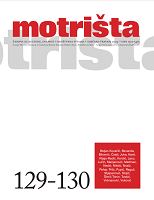
Starozavjetne biblijske knjige imale su velik utjecaj na njemačku književnost i pisce, od početaka pismenosti pa sve do 20. stoljeća. Na temelju prethodnih istraživanja starozavjetnih tema i motiva, uočeno je da do sada nisu proučeni utjecaji starozavjetnih tekstova Povijest Josipa i njegove braće i Knjiga o Jobu, kao i drugih tekstova iz Staroga zavjeta (primjerice Petoknjižja) na roman Thomasa Manna Josip i njegova braća. U Mannovu četveroknjižju o starozavjetnom Josipu, glavni je lik smješten u okvir istočnih religija, dok se u Starome zavjetu tekstopisci dotiču proučavanja astrologije, točnije zodijačkih znakova koji ujedno odgovaraju dvanaestorici Jakovljevih sinova, odnosno dvanaestorici plemena Izraelovih. Mann ovdje zanemaruje koncept vremena te Josipa prikazuje u prapovijesnom vremenu, premještajući ga u suvremenije doba. Stoga i starozavjetni Egipat predstavlja kao alegoriju u kontekstu suvremenog svijeta, točnije Amerike, u koju će i sam Mann emigrirati nakon dolaska Hitlera na vlast. Kroz ovo četveroknjižje nisu opisani samo Josip i njegova braća, nego se spominju, izravno i neizravno, gotovo svi starozavjetni likovi iz Knjige postanka. U radu ćemo pokušati demonstrirati biblijske teme i motive u starozavjetnom izvorniku, uz prilagodbu romanesknom žanru i kontekstu u kojima su teme i motivi Starog zavjeta postali dio njemačke književnosti i kulture.
More...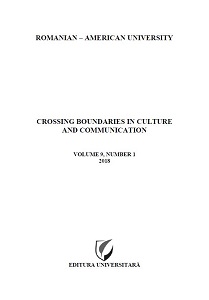
This article discusses the issues of literary and nonliterary ego and the style of different types of texts from Willy Sander's perspective, which is presented in his book "Good German-better German" is presented. There is a relationship between the ego in literary works and the individuality of the writer, but the author's own style influences the extent of this connection. The individual style is emphasized as the most important feature in all German literature and also in non-literary texts.
More...
German culture experienced an enormous rupture after 1945. Not only was the country in ruins and an outcast of the international community because of the recent regime and its devastating effects, its entire cultural tradition was under suspicion: had German culture always been steering towards this catastrophe? Was everything within it corrupt? While the frenetic economic activity of the ‘Wirtschaftswunder’ side-stepped a mainstream confrontation with the horrors of the recent past, intellectuals and artists radically interrogated the reasons for the disaster. As always, language and the meaning-making procedures in language prepare the mind to open up and to prepare for action. Language is at the root of action and this insight fuelled reflections on language, for instance by philosophers such as Wittgenstein and Heidegger. But it was particularly in lyric poetry that a lucid and politically aware examination of the recent past took place and an expression of such considerations could be found. This paper demonstrates how poets made a unique and highly significant contribution to the development of a new political awareness in German language culture. By integrating silence and the absurd (that is, the unheard of and the unspeakable) into literary language, this so-called hermetic poetry did not entail a withdrawal from society but, on the contrary, devoted itself to a particular form of political commitment. This procedure represents a rupture with what Max Horkheimer and Theodor W. Adorno called the ‘culture industry’ (1947), opposing conventional and habituated approaches to art in terms of its production and reception and advocating instead a stringent and critical concept of arresting aesthetic form that was to distinguish the work of art from products of that culture industry. Paul Celan, Ingeborg Bachmann, Ilse Aichinger, Günter Eich and Nelly Sachs are the household names associated with this poetics. While it was never necessarily mainstream, it was arguably the most innovative poetic strand of its time and in the long run a key factor in shaping a modern German culture that could come to terms with its past and overcome authoritarian structures.
More...
The review article addresses the monograph Transforming Girls: The Work of Nineteenth -Century Adolescence by Julie Pfeiffer (2021), in which she juxtaposes American 19th-century girls’ novels and German Backfischromane. The article re-views individual chapters of the book, in which Pfeiffer incorporates key perspec-tives on the differences and similarities between eight novels. According to the author of the article, the monograph makes an important contribution to the state of research on this literary genre.
More...